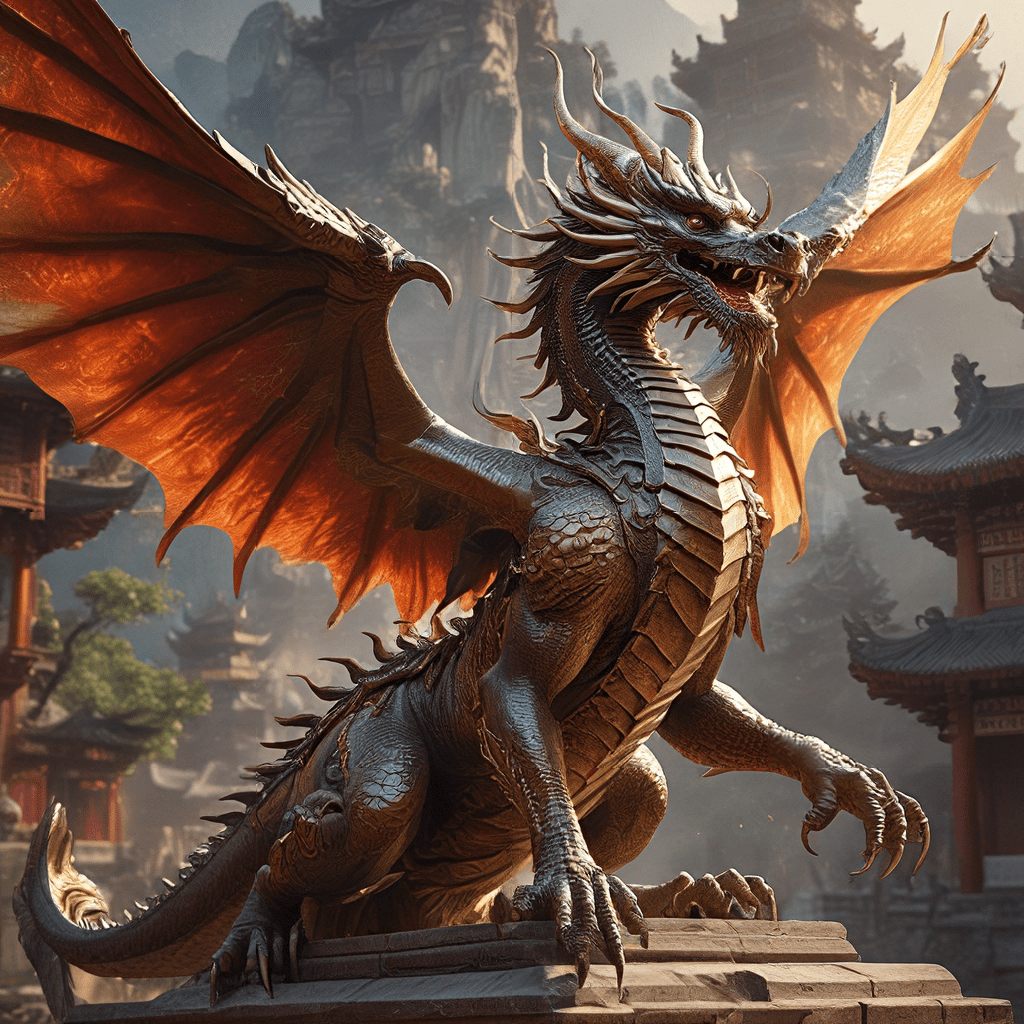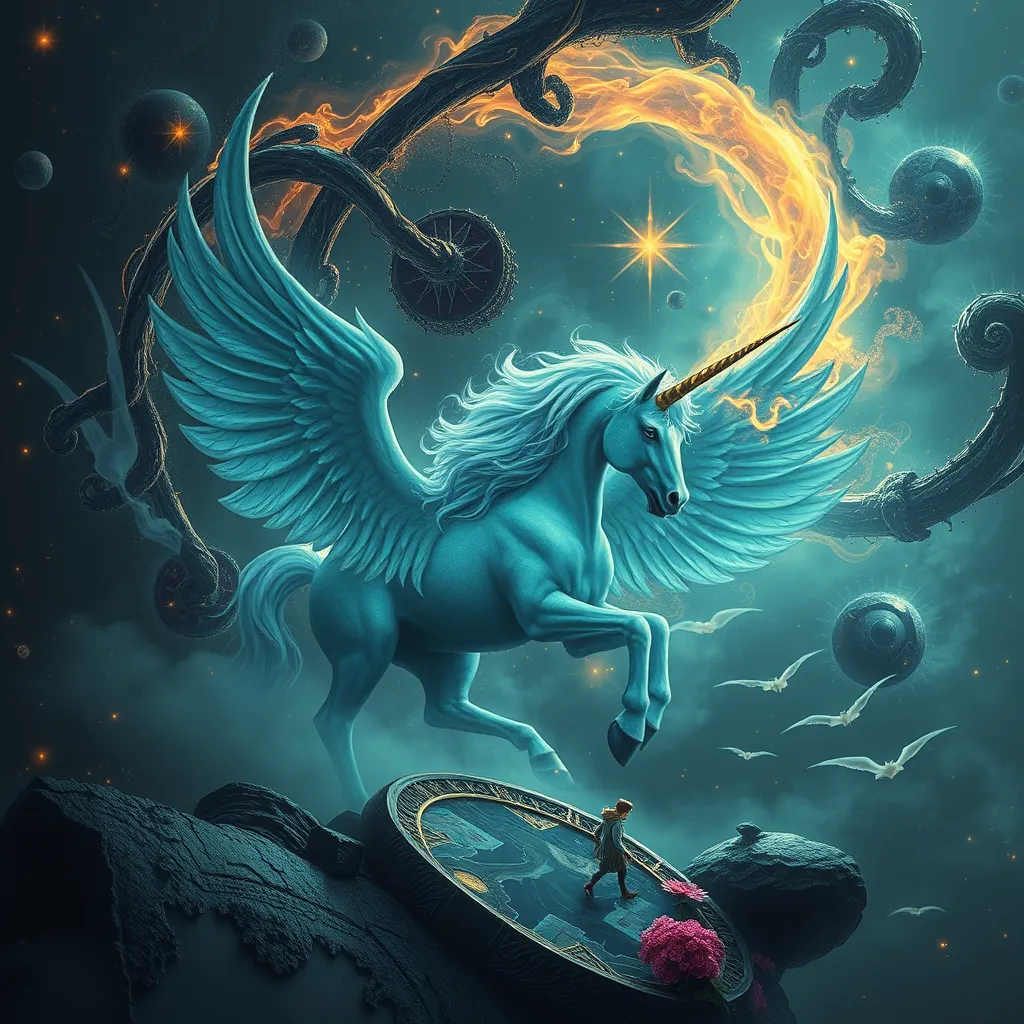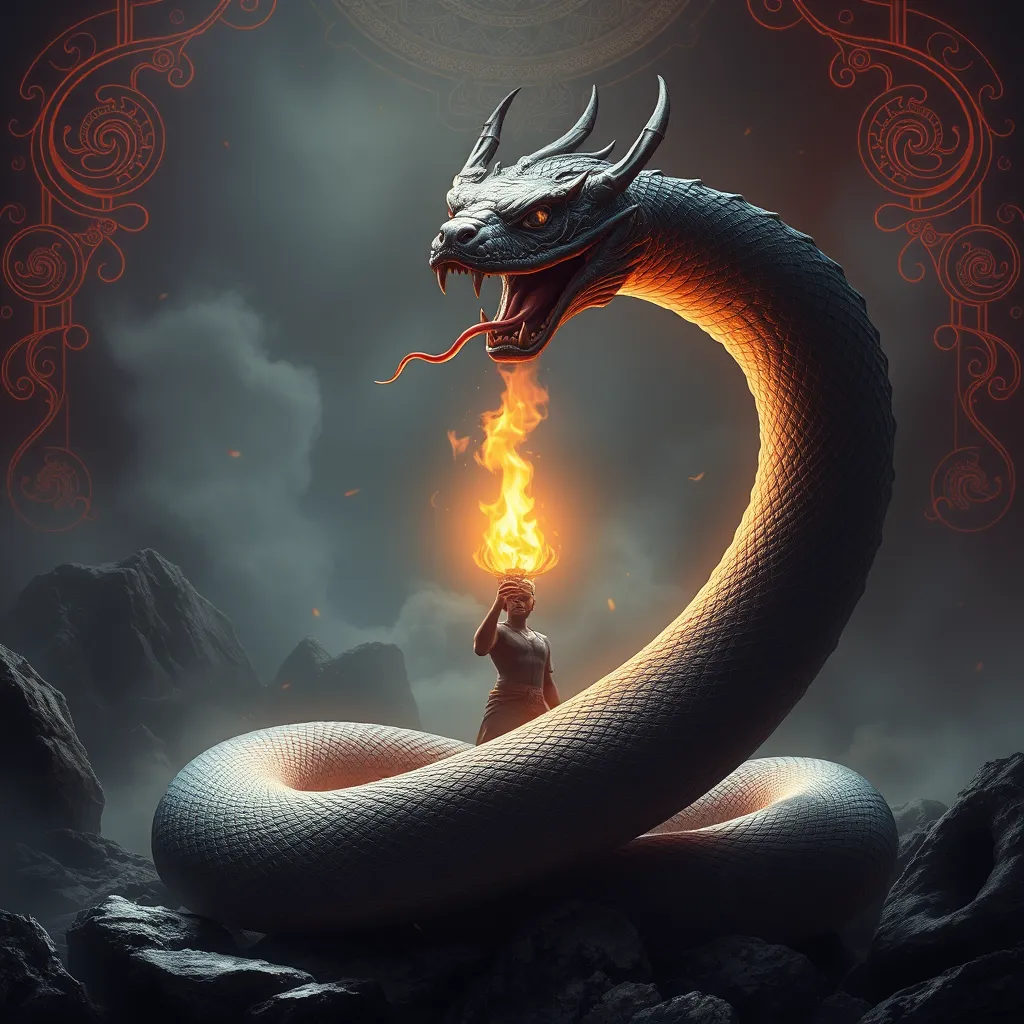Dragons in Ancient Chinese Mythology: An Overview
In the rich tapestry of ancient Chinese mythology, dragons hold a prominent place, embodying power, majesty, and a profound connection to the natural world. These mythical creatures, far removed from the fire-breathing beasts of Western lore, are revered as benevolent beings, representing auspiciousness, good fortune, and the very essence of the Chinese spirit. Their presence weaves through Chinese art, literature, and philosophy, shaping the cultural landscape for millennia. The dragon, a symbol of both strength and grace, is an integral part of Chinese identity, influencing everything from imperial power to everyday life.
Unlike Western dragons, which are often depicted as fearsome and destructive, Chinese dragons are benevolent and wise. They are associated with water, rain, and fertility, symbolizing life-giving forces and the cyclical nature of the universe. Their serpentine bodies, adorned with scales and whiskers, evoke the fluidity and dynamism of nature, while their four legs suggest a connection to the Earth. The dragon’s ability to fly, often depicted as soaring through the clouds, represents its celestial nature and its power to transcend the physical world.
The Dragon: A Symbol of Power and Majesty
The dragon’s unwavering presence in Chinese mythology reflects its deep association with power and authority. Throughout history, it has been a symbol of imperial rule, representing the emperor’s divine mandate and his ability to command the forces of nature. The emperor’s throne was often adorned with dragon motifs, and his clothing was embroidered with intricate dragon designs. In imperial processions, the emperor would be accompanied by dragon-shaped flags and banners, signifying his power and legitimacy.
Beyond the imperial realm, the dragon continues to be a potent symbol of strength and ambition. It is often invoked in Chinese art, architecture, and literature to represent success, achievement, and the pursuit of excellence. In martial arts, the dragon is associated with agility, flexibility, and the ability to overcome obstacles.
Dragons in Chinese Cosmology: Guardians of the Four Directions
Chinese cosmology, a worldview that seeks to understand the order and harmony of the universe, places dragons at the heart of the cosmic balance. Each of the four cardinal directions is said to be guarded by a specific dragon, each representing a distinct element and season. The Azure Dragon of the East represents spring and the element of wood, associated with growth and renewal. The Vermillion Bird of the South represents summer and the element of fire, symbolizing passion and intensity. The White Tiger of the West represents autumn and the element of metal, reflecting strength and resilience. The Black Tortoise of the North represents winter and the element of water, signifying stillness and reflection.
These four celestial guardians, along with the yellow dragon, which represents the center and the element of earth, are believed to maintain cosmic order and harmony. Their presence in the cosmos ensures the smooth flow of energy and the balance of the natural world. This concept of five dragons guarding the five directions is a testament to the dragon’s pivotal role in Chinese cosmology and its deep connection to the fundamental forces of the universe.
The Dragon in Chinese Art: Depictions and Symbolism
The dragon’s presence in Chinese art is as pervasive as its influence on mythology. It is depicted in various forms, from intricate jade carvings and ceramic sculptures to majestic paintings and scrollwork. The most common depiction is that of a serpentine creature with four legs, scales, whiskers, and a distinctive long, sinuous beard. These features, symbolic of power, majesty, and wisdom, are often amplified by vibrant colors and elaborate patterns.
Dragons are often portrayed in dynamic poses, soaring through clouds, dancing amidst waves, or coiled around precious objects, reflecting their connection to both the celestial and terrestrial realms. Their presence in art reflects the dragon’s multifaceted symbolism, encompassing good fortune, prosperity, and the ability to overcome challenges. From magnificent palaces to humble homes, dragon motifs adorn everything from rooftops and doorways to furniture and personal belongings, a testament to the dragon’s enduring presence in Chinese art and culture.
Dragons in Chinese Literature: Legendary Tales and Folk Stories
The dragon’s role in Chinese literature is equally significant. It features prominently in ancient texts, folktales, and poetry, embodying the spirit of the Chinese imagination. In classical literature, dragons are often portrayed as wise and benevolent beings, acting as protectors or guides to humanity. Tales of dragons battling demons, rescuing damsels in distress, or bestowing blessings on deserving mortals are common themes, reflecting the dragon’s capacity for both power and compassion.
One of the most famous dragon stories is the legend of the Yellow Emperor (Huangdi), who is said to have ascended to heaven riding on the back of a dragon. This tale underscores the dragon’s association with emperors, rulers, and the divine mandate. In folktales, dragons are often associated with specific localities, becoming local guardian spirits, protecting the land and its people. This intimate connection between dragons and local communities further reinforces their importance in Chinese culture.
Dragons as Divine Beings: Embodiment of Celestial Power
In the Chinese belief system, dragons are not merely mythical creatures but divine beings, embodiments of celestial power and cosmic energy. They are often associated with the heavens, clouds, and storms, representing the awe-inspiring forces of nature. Their ability to fly, often depicted soaring through the clouds, represents their connection to the celestial realm and their power to transcend the limitations of the physical world.
Dragons are believed to possess magical powers, including the ability to control weather, summon rain, and even shape-shift. They are often invoked as guardians of sacred places, such as temples and mountains, protecting them from harm and bestowing blessings on those who seek their favor. This divine status elevates them beyond mere animals, making them powerful symbols of spiritual power, good fortune, and the cyclical nature of life.
The Dragon’s Influence on Chinese Culture: From Emperors to Everyday Life
The dragon’s influence on Chinese culture is profound and pervasive, shaping every aspect of life, from imperial power to everyday traditions. The dragon’s association with emperors is evident in its presence on imperial robes, flags, and throne decorations, reflecting the emperor’s divine mandate and his connection to the celestial realm. The dragon also appears on coins, seals, and other official documents, signifying the authority and legitimacy of the ruling class.
Beyond the imperial realm, dragons are integral to Chinese art, architecture, and literature. They adorn buildings, bridges, and temples, guarding them from evil and bringing good fortune. Dragon dances, a traditional folk performance, are often performed during festivals and celebrations, bringing joy and prosperity to the community. Dragon motifs are incorporated into everyday objects, from teapots and chopsticks to furniture and clothing, reflecting the dragon’s enduring presence in the lives of ordinary people.
Theories About the Origin of Dragon Mythology: Historical and Cultural Influences
The origins of dragon mythology in China are multifaceted, drawing on historical and cultural influences. Some scholars speculate that the dragon’s serpentine form may be inspired by ancient Chinese encounters with snakes or crocodiles, while others suggest that its ability to fly might be linked to early observations of birds or other flying creatures. Another theory proposes that the dragon evolved from a fusion of several different animal images, reflecting a desire to create a creature that embodies the power and beauty of the natural world.
The dragon’s association with water and rain likely stems from the importance of agriculture in ancient China. Water was essential for crop cultivation, and rain was seen as a life-giving force, bringing prosperity and fertility. The dragon, as a powerful being associated with water, became a symbol of this vital resource and its connection to the well-being of the people. The dragon’s association with the emperor and the imperial court likely developed over time, reflecting the emperor’s role as the protector of the people and the guardian of the land.
The Dragon’s Evolution: From Ancient Belief to Modern Interpretation
Over centuries, the dragon’s symbolism has evolved alongside Chinese society, reflecting changing cultural values and beliefs. In ancient times, the dragon was primarily viewed as a powerful and benevolent being, a divine force associated with emperors and the forces of nature. As Chinese culture developed, the dragon’s symbolism became more nuanced and multifaceted, encompassing elements of wisdom, strength, and good fortune.
In modern China, the dragon continues to hold a significant place in popular culture and national identity. It is a symbol of strength, resilience, and the enduring spirit of the Chinese people. Dragons continue to appear in contemporary literature, art, and film, reflecting their enduring appeal and their ability to resonate with people from all walks of life. While the dragon’s symbolism may have evolved over time, its core meaning – as a symbol of power, wisdom, and good fortune – remains deeply ingrained in the Chinese psyche.
Dragons in Contemporary China: A Lasting Symbol of Power and Tradition
In contemporary China, the dragon continues to hold a prominent place in national identity, culture, and popular imagination. It is a potent symbol of strength, resilience, and the enduring spirit of the Chinese people. The dragon’s image graces official emblems, national celebrations, and countless everyday objects, reflecting its deep-rooted presence in the cultural landscape.
The dragon’s enduring popularity is evident in its presence in contemporary art, literature, and film. From stunning dragon sculptures adorning modern cities to the mythical beasts featured in popular fantasy novels and films, the dragon remains a captivating and powerful symbol. The dragon’s continued relevance speaks volumes about its ability to adapt and evolve, retaining its core symbolism while resonating with new generations.
While the dragon’s role in daily life may have shifted from its ancient position as a divine guardian to a more symbolic presence, its enduring power as a symbol of strength, good fortune, and the enduring spirit of the Chinese people remains. The dragon’s image continues to evoke a sense of national pride and cultural identity, reminding people of their rich heritage and their unwavering connection to the past.
FAQ
Q: What is the difference between Western dragons and Chinese dragons?
A: Western dragons are often depicted as fire-breathing beasts, associated with evil and destruction. They are usually portrayed as fearsome and dangerous creatures. Chinese dragons, on the other hand, are benevolent beings, representing auspiciousness, good fortune, and the forces of nature. They are seen as protectors and bringers of prosperity.
Q: What is the significance of the five colors of dragons?
A: In Chinese mythology, each of the five directions is associated with a specific dragon and a color: Azure Dragon (East, Wood), Vermillion Bird (South, Fire), White Tiger (West, Metal), Black Tortoise (North, Water), and Yellow Dragon (Center, Earth). These colors represent the five elements and their corresponding qualities.
Q: Why are dragons often associated with emperors in China?
A: In ancient China, the emperor was considered the Son of Heaven, having a divine mandate to rule. The dragon, as a powerful and benevolent creature associated with the celestial realm, became a symbol of the emperor’s authority and legitimacy.
Q: Are there any contemporary examples of the dragon in Chinese culture?
A: Yes, the dragon remains a powerful symbol in contemporary China. It appears on official emblems, national celebrations, and everyday objects. It is also featured in popular art, literature, and film.
Q: What is the significance of the dragon dance?
A: The dragon dance is a traditional folk performance often performed during festivals and celebrations. It is believed to bring good fortune, prosperity, and ward off evil spirits.




